How to Interpret Motorcycle Spec Sheets
When you’re looking to buy a motorcycle and you’ve got all the specifications on potential buys, it helps to know what all those numbers and measurements mean.
A motorcycle spec sheet tells you a lot about how the machine performs, handles and rides, helping you narrow down the list of suitable bikes. Watch the video above and follow the guide below to learn about motorcycle spec sheets and how to read them so you can make more informed decisions before buying.
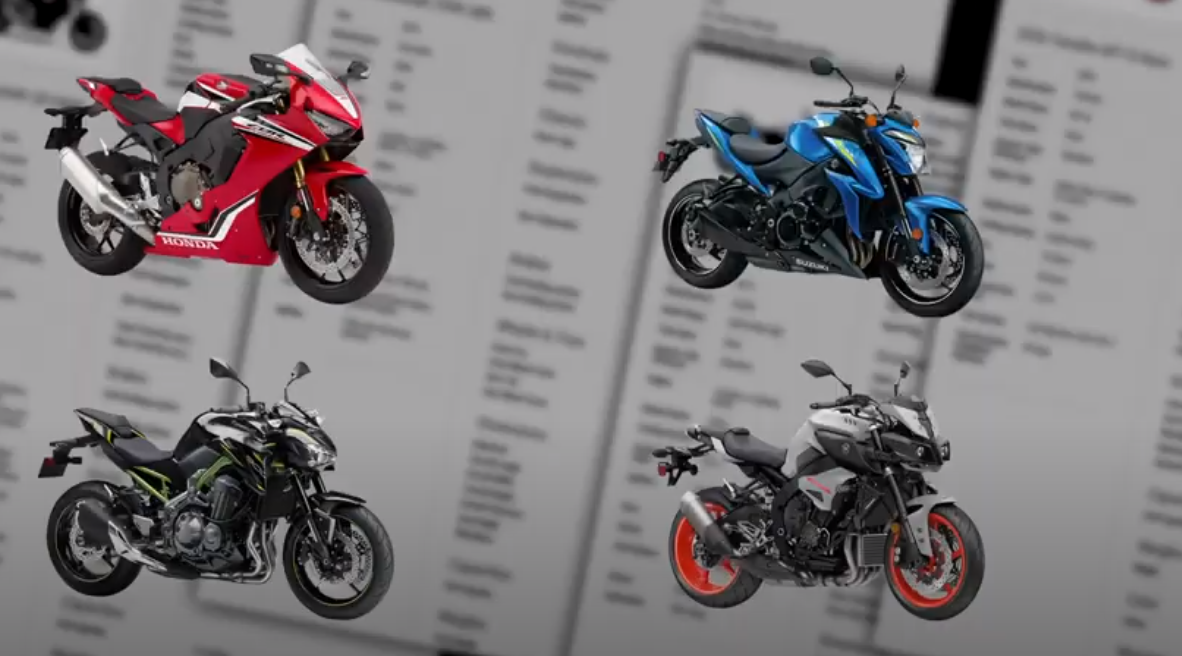
For demonstration purposes, we compared the spec sheets of four makes and models in the sport bike segment:
- Honda CBR1000R
- Suzuki GSX S1000
- Kawasaki Z900
- Yamaha MT-10
Engine Type
The size of the engine is measured in cubic centimeters (cc). Generally speaking, motorcycles in a similar class have very similar engine sizes and cylinder configurations.
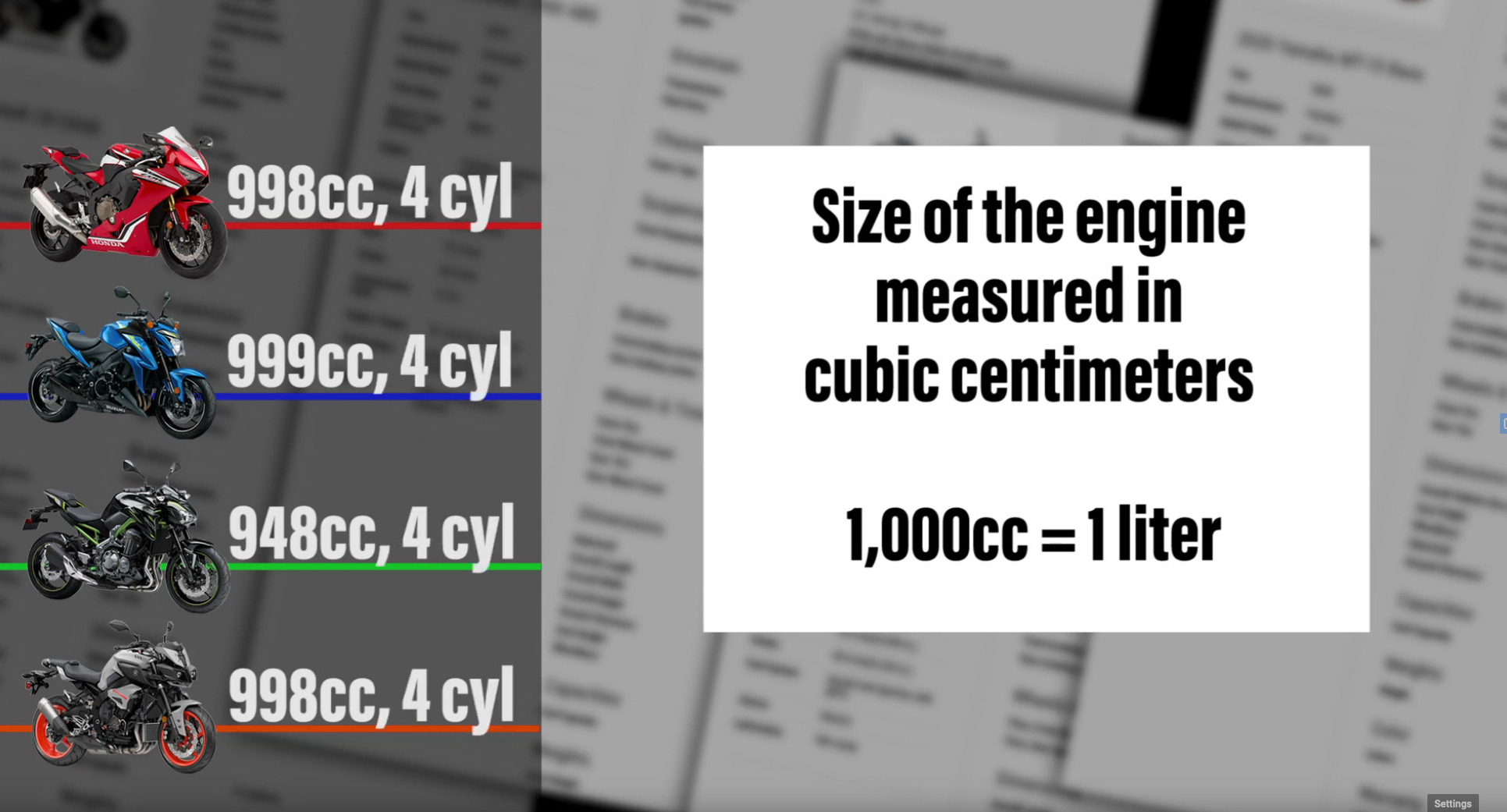
- Honda CBR1000R - 998cc 4 cylinders
- Suzuki GSX S1000 - 999cc 4 cylinders
- Kawasaki Z900 - 948cc 4 cylinders
- Yamaha MT-10 - 998cc 4 cylinders
Bore & Stroke
The bore is the width of the cylinder in millimeters (mm) and the stroke is the distance (length) the piston travels within the cylinder in millimeters, as determined by the crankshaft.
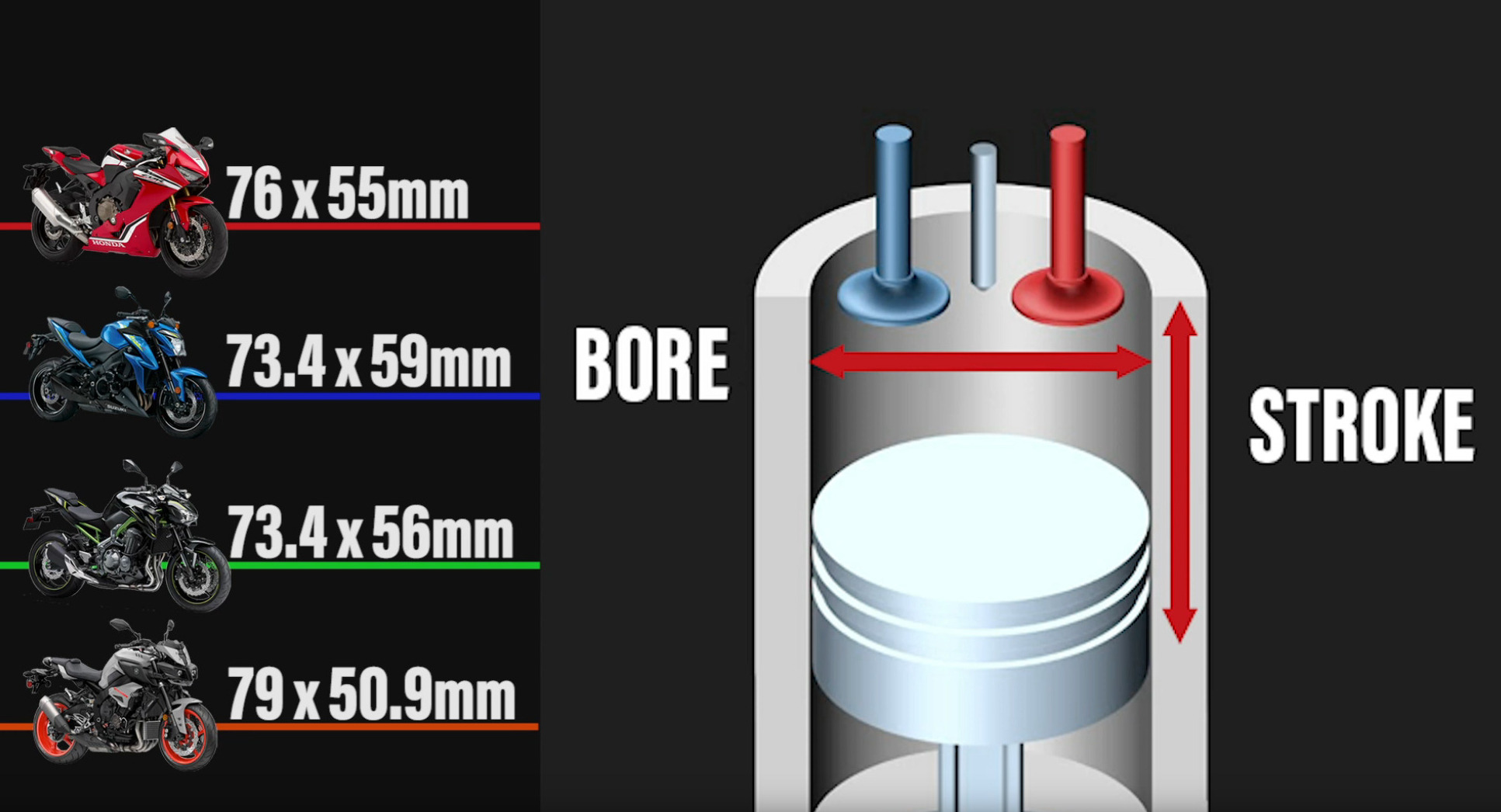
A motorcycle with a bore that is larger than the stroke will rev higher and have more top-end power because the piston has less distance to travel. Motorcycles with a bore that is smaller than the stroke rev lower, but provide more torque because the piston has less distance to travel.
- Honda CBR1000R - 76.0mm x 55.0mm
- Suzuki GSX S1000 - 73.4mm x 59.0mm
- Kawasaki Z900 - 73.4mm x 56.0mm
- Yamaha MT-10 - 79.0mm x 50.9mm
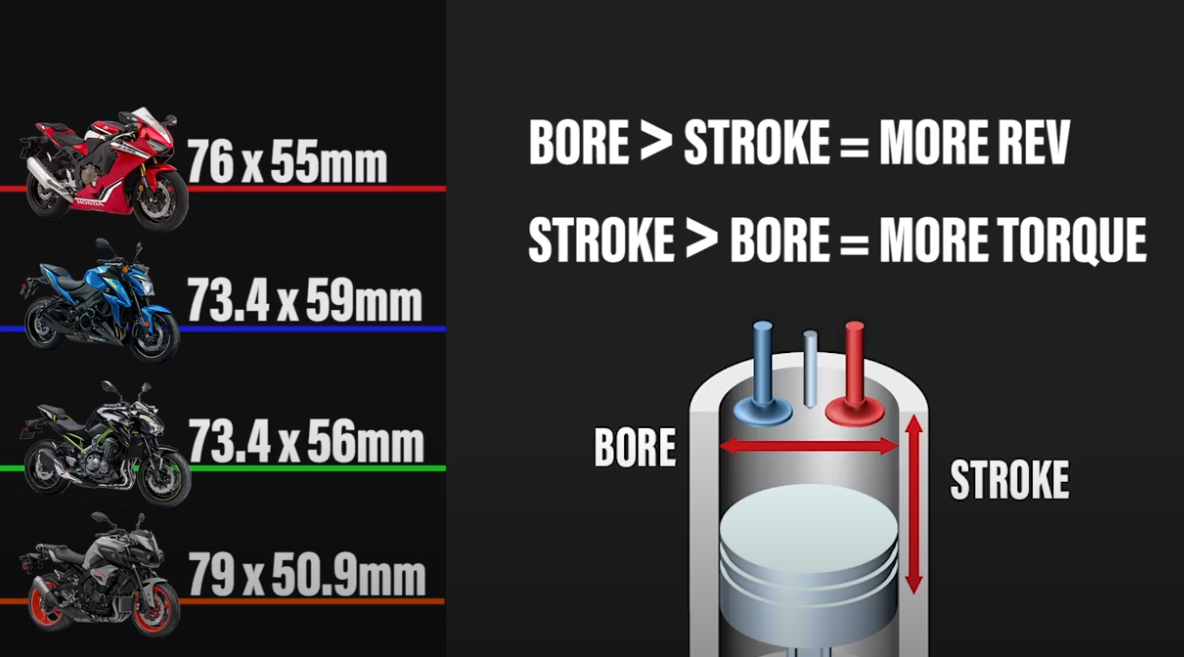
Induction
This is the intake of the fuel/air mixture entering the combustion chamber.

Most modern bikes feature programmed fuel injection with individual throttle bodies, which is the most accurate way to deliver a measured volume of air and fuel into an engine. The motorcycle manufacturers give their fuel injection systems different names for marketing purposes, but really the systems all do the same thing: measure the amount of air vs the amount of fuel being drawn into the combustion chamber.
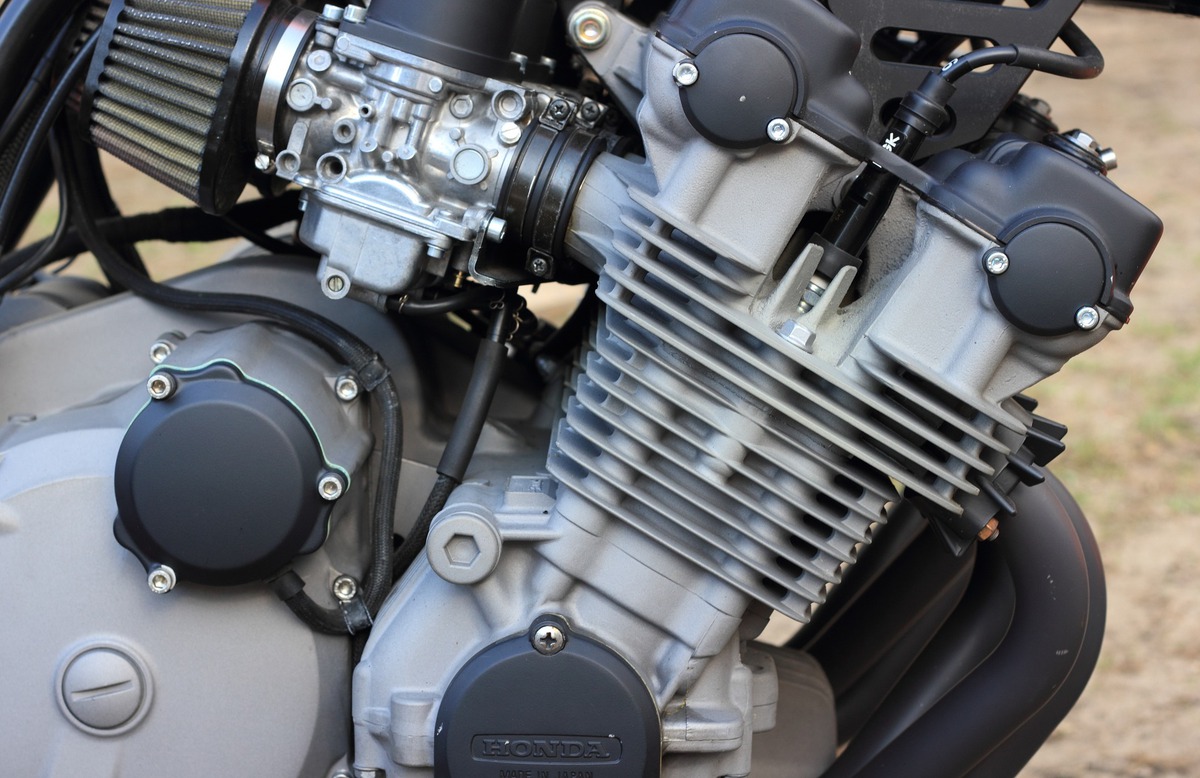
- Honda CBR1000R - PGM-FI (Programmed Fuel Injection)
- Suzuki GSX S1000 - SDTV (Suzuki Dual Throttle Valve)
- Kawasaki Z900 - DFI (Digital Fuel Injection)
- Yamaha MT-10 - TCI (Transistor Coiled Igniter)
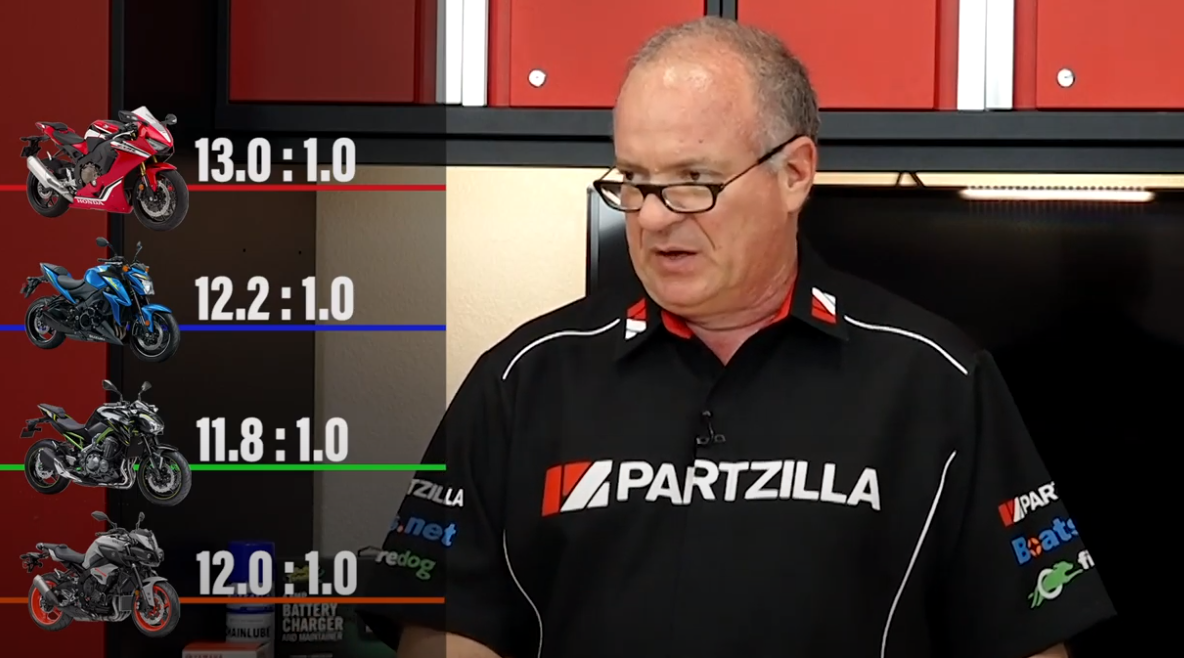
The greater the compression ratio, the greater the explosion caused by the combustion of the fuel/air mixture, and thus the greater the power produced by the engine.
- Honda CBR1000R - 13.0 : 1.0
- Suzuki GSX S1000 - 12.2 : 1.0
- Kawasaki Z900 - 11.8 : 1.0
- Yamaha MT-10 - 12.0 : 1.0
Chassis Components
The components responsible with how the bike handles and interacts with the surface it’s being ridden on. These four bikes in the sport bike segment all have inverted cartridge front forks and a single rear shock controlling the swingarm.
Rake
The rake (or castor angle) is the angle of the front forks compared to an imaginary vertical line running through the center of the front wheel axle.
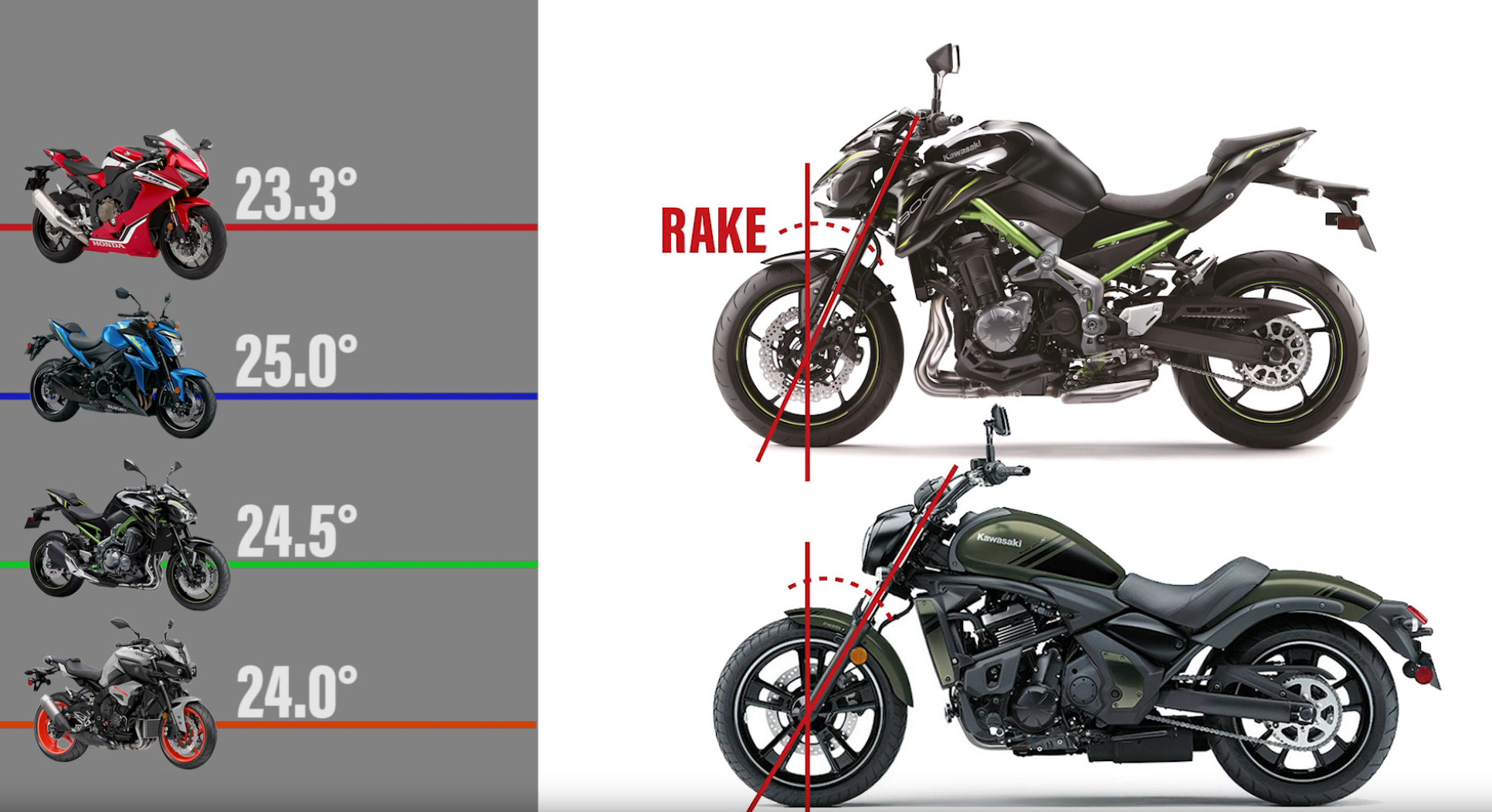
A narrower angle rake provides quicker and more precise steering. On the other hand, a wider angle rake provides slower and more relaxed steering. Typically sport bikes have lower (narrower) rake and cruiser bikes have a higher (wider) rake.
- Honda CBR1000R - 23.3 degrees
- Suzuki GSX S1000 - 25.0 degrees
- Kawasaki Z900 - 24.5 degrees
- Yamaha MT-10 - 24.0 degrees
Trail
The trail (or castor) is the distance between the point the front wheel touches the ground (directly below the center of the front wheel axle) and the point the front forks would touch the ground if they were to extend that far.
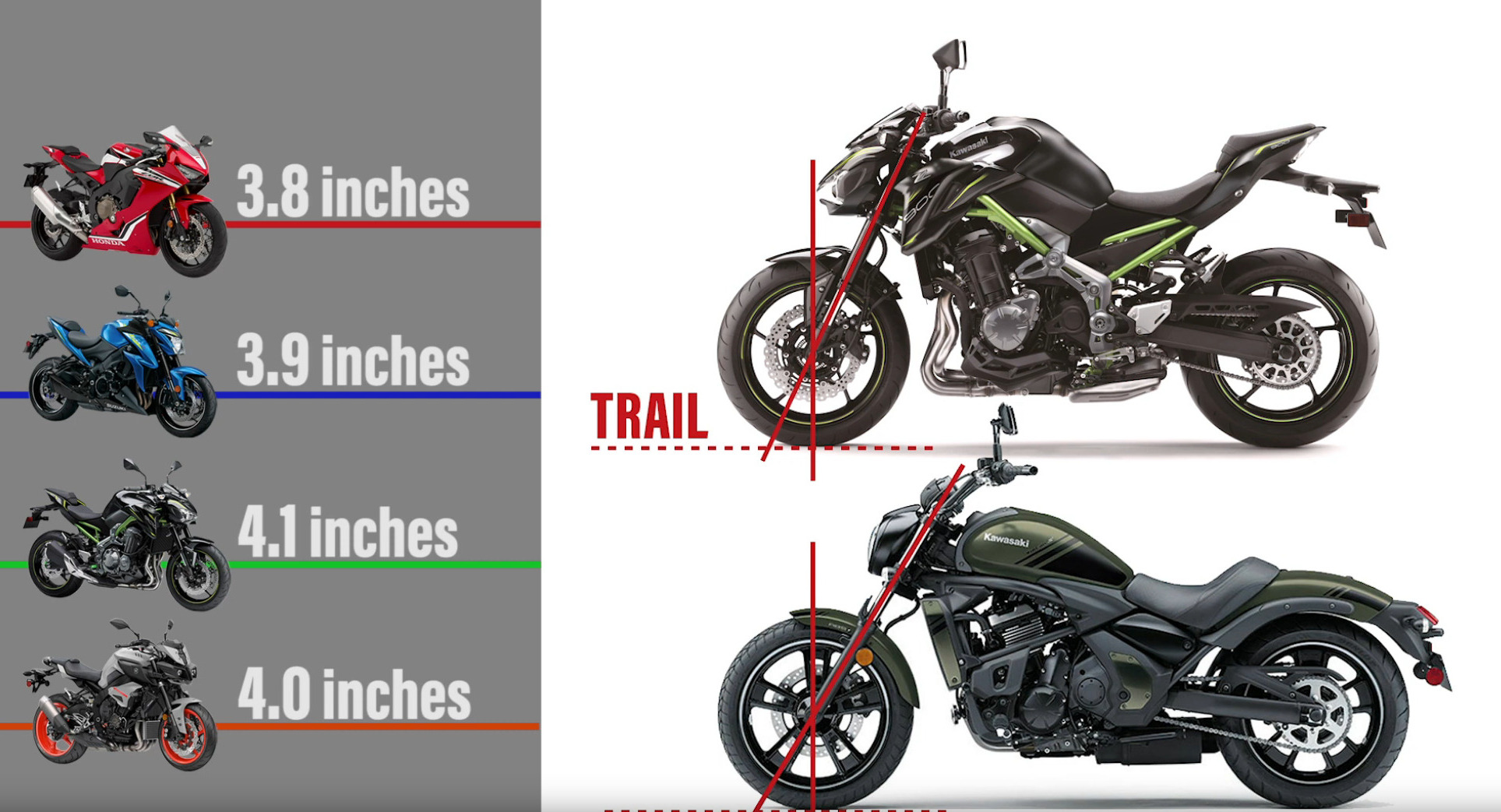
A shorter trail provides quicker and more precise steering, while a longer trail provides slower and more relaxed steering. Typically sport bikes have a shorter trail and cruiser bikes have a longer trail.
- Honda CBR1000R - 3.8 inches
- Suzuki GSX S1000 - 3.9 inches
- Kawasaki Z900 - 4.1 inches
- Yamaha MT-10 - 4.0 inches
The combination of the rake and trail play a major role in the overall handling characteristics of the motorcycle.
Wheelbase
This is the distance between the points the front and rear wheels touch the ground.
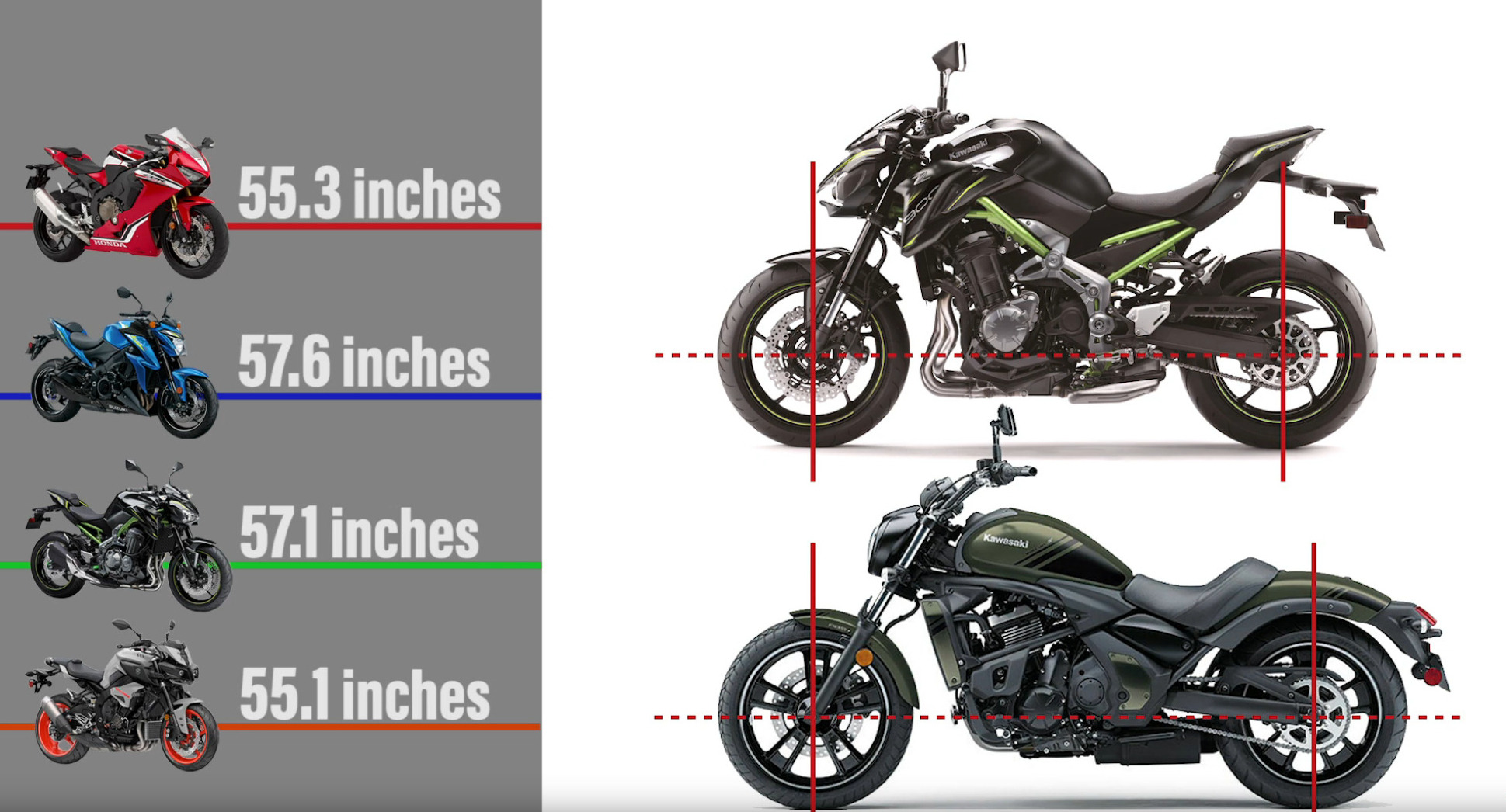
A shorter wheel base makes for a more maneuverable and agile machine. Conversely, a longer wheel base makes for a more stable machine. Typically sport bikes have shorter wheelbases and cruiser bikes have longer wheelbases.
- Honda CBR1000R - 55.3 inches
- Suzuki GSX S1000 - 57.6 inches
- Kawasaki Z900 - 57.1 inches
- Yamaha MT-10 - 55.1 inches
Seat Height
This is the height from the top of the seat to the ground. Seat heights are very similar between bikes in a particular segment.
- Honda CBR1000R - 32.3 inches
- Suzuki GSX S1000 - 31.9 inches
- Kawasaki Z900 - 31.3 inches
- Yamaha MT-10 - 32.1 inches
Curb Weight
The lower the curb weight, the better the power-to-weight ratio and thus the better the acceleration.
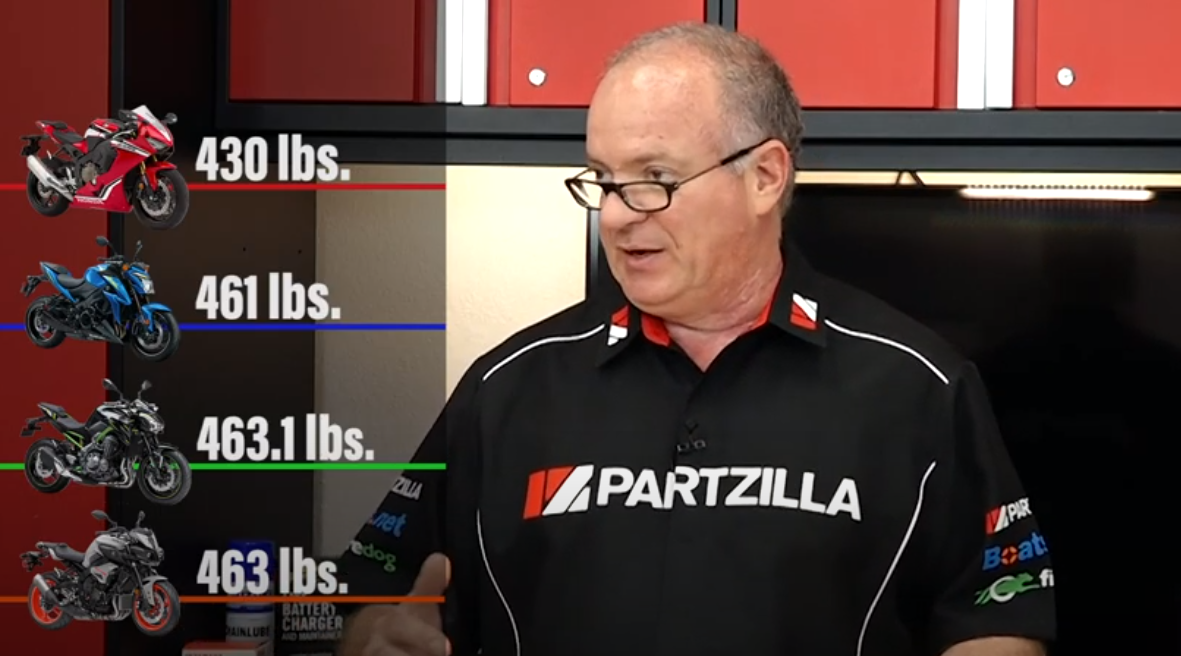
Typically sport bikes have low curb weights and high power-to-weight ratios, while cruiser bikes have high curb weights and low power-to-weight ratios.
- Honda CBR1000R - 430.0 lbs
- Suzuki GSX S1000 - 461.0 lbs
- Kawasaki Z900 - 463.1 lbs
- Yamaha MT-10 - 463.0 lbs
